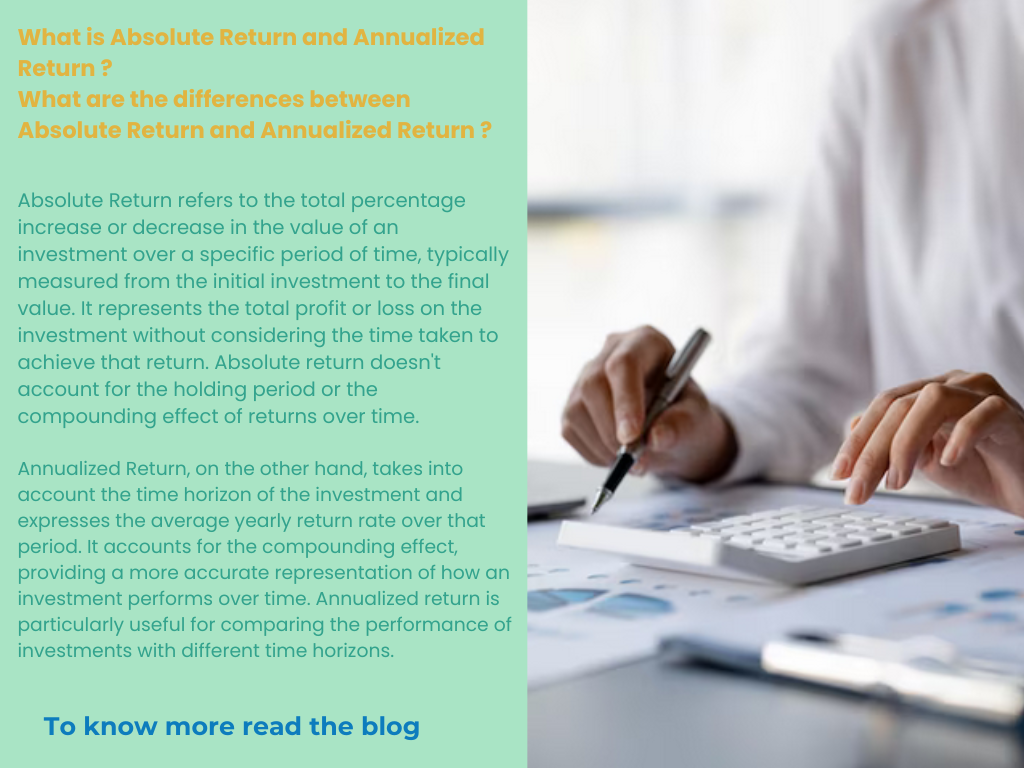What is Absolute Return and Annualized Return ? What are the differences between Absolute Return and Annualized Return ?
Absolute Return, refers to the total percentage increase or decrease in the value of an investment over a specific period of time, typically measured from the initial investment to the final value. It represents the total profit or loss on the investment without considering the time taken to achieve that return. Absolute return doesn't account for the holding period or the compounding effect of returns over time.
Mathematically, the formula for calculating absolute return is:
Annualized Return, on the other hand, takes into account the time horizon of the investment and expresses the average yearly return rate over that period. It accounts for the compounding effect, providing a more accurate representation of how an investment performs over time. Annualized return is particularly useful for comparing the performance of investments with different time horizons.
To calculate the annualized return, you can use the formula for Compound Annual Growth Rate (CAGR):
Where:
- Final Value is the value of the investment at the end of the period.
- Initial Investment is the amount initially invested.
- Number of Years is the duration of the investment in years.
Key Differences between Absolute Return and Annualized Return :
- Calculation Method: The key difference lies in how they are calculated. Absolute return calculates the percentage change in value between two points in time, while annualized return accounts for the compounding effect over multiple periods.
- Time Consideration: Absolute return doesn't consider the time period for which the investment was held. It's a simple percentage change over the entire period. On the other hand, annualized return is an annualized figure that accounts for the investment's performance over each year, providing a more meaningful measure for comparing investments of different holding periods.
- Volatility Consideration: Annualized return accounts for the impact of volatility and fluctuating returns over time. It gives a better understanding of the investment's growth potential over extended periods.
- Investment Comparison: When comparing investments with different time frames, annualized return is a better metric because it standardizes the returns on an annual basis, making it easier to compare them directly.
- Use Case: Absolute return is useful for understanding the actual change in value over a specific period, while annualized return is more suited for assessing the long-term growth potential of an investment.
In summary, absolute return provides a simple measure of profit or loss over a period, whereas annualized return offers a smoothed average annual growth rate that factors in compounding. When evaluating mutual funds or other investments, considering both metrics can give you a more comprehensive understanding of their performance.


